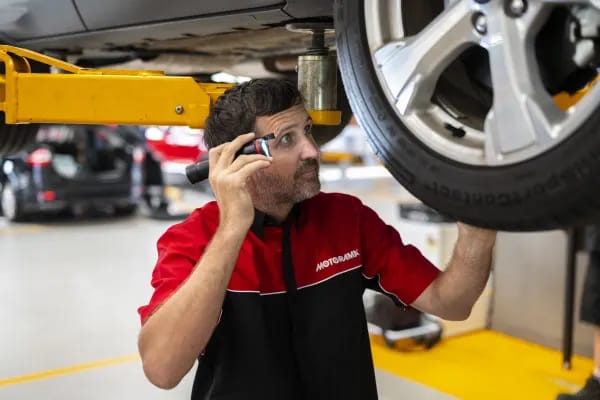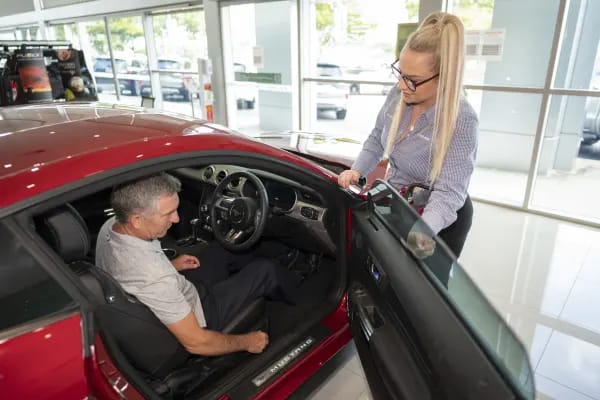
Hybrid v PHEV v EV: How To Go Electric
Posted in Buyer Advice
Hybrid v PHEV v EV: How To Go Electric
There are a lot of abbreviations in the car industry and manufacturers like to use new terminology to make innovations look more interesting. The problem is that the customer loses sight of what they mean or what a certain feature actually does. This happened exactly when hybrid, plug-in electric vehicles came on the market a few years ago. What is the different between them, how do they work and why would you choose one or the other over a conventional petrol or diesel engine? Let us explain.
HYBRID
The first step away from a petrol engine is to buy a hybrid vehicle. It’s the same car with a petrol engine (either the same but usually smaller one) and an electric motor. If a certain car is available in a hybrid version they’re usually advertised alongside each other which makes comparing them quite easy. The price different between the two isn’t too big anymore either; the new Toyota Corolla for example – which now runs on 91 unleaded and doesn’t need premium anymore - is $1500 more expensive in hybrid – that’s it. They pretty much look the same as well except for a hybrid badge on the back and for a battery pack neatly tucked away in the boot. So why choose a hybrid?
Because it saves on fuel and is good for the environment, that’s why. This is how it works: the car can do certain things like running idle, driving slow or slowing down without using the petrol engine, just the electric battery (if charged enough). When necessary, it seamlessly combines the two. For example, when accelerating, the petrol engine also charges the battery again. It charges itself as well when braking (regenerative power) and at other moments when it can. On the infotainment screen, you can see exactly how the petrol engine and electric battery work together, but you won’t notice much difference except for the absolute silence when running solely on the battery.

Every time the battery takes over from the petrol engine you’ll save on fuel and don’t emit any carbon monoxide. That’s good for nature and your wallet. Because hybrid systems have been on the market for quite a while, they’re much more sophisticated than a few years back; their batteries keep on improving regarding capacity, power output and efficiency. At the Motorama Toyota dealership you can use a handy tool to calculate your savings on fuel and emissions to discover if hybrid on popular models like the Camry, Corolla or Prius is the best choice for you.
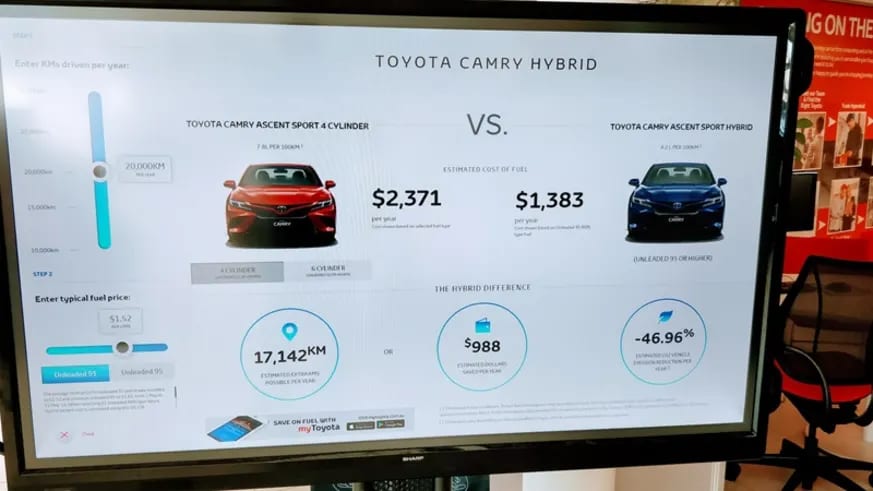
PHEV
The next step would be to look at a PHEV: Plug-In Hybrid Electric Vehicle. There are three parts to this title: plug-in, hybrid and electric. The hybrid electric part is the same as in a hybrid vehicle like discussed above, but it’s the plug-in part where it gets interesting. Where a ‘hybrid’ only charges while driving, a ‘plug-in’ (as the name says) can be plugged into an outlet and charged independently. Because of this feature a PHEV can operate solely on its own battery and usually drive around 50-60km without using the petrol engine, as is the case with the Mitsubishi Outlander PHEV.
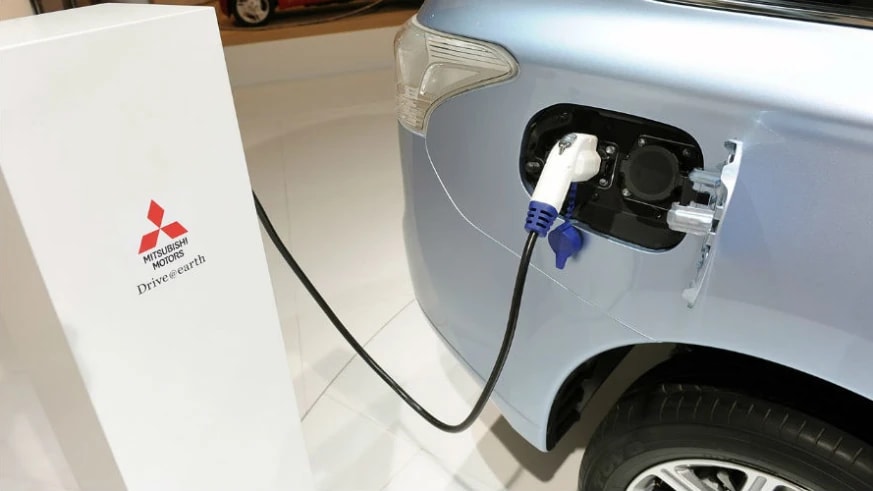
With a PHEV most people will actually be able to commute to work without using petrol, plug it into a wall socket (or charging station if available), charge it while working and drive home again to do the same. If you run out of battery, the car will just continue as a standard hybrid. Unfortunately, PHEVs haven’t proved to be all that popular in Australia, mainly because plugging it in is another step – next to fuelling up – in order to drive the car. If your garage isn’t equipped with the right outlet it can take a long time to charge and proper charging stations aren’t available in abundance yet.
EV
And then there are EVs: fully electric vehicles. No petrol engine in those, just batteries. The most famous – and expensive ones – are of course Tesla’s, which made the electric vehicle ‘cool’ and fast, very fast. They also provide dedicated charging stations to their customers and have a range of about 500 kilometres. But they come with a steep price tag. More accessible is for example the Nissan Leaf, which still boasts a range of 170 kilometres. Like a PHEV you need to charge the batteries, but you don’t have a petrol engine to fall back on. They come with bigger battery packs though, hence the extended range.
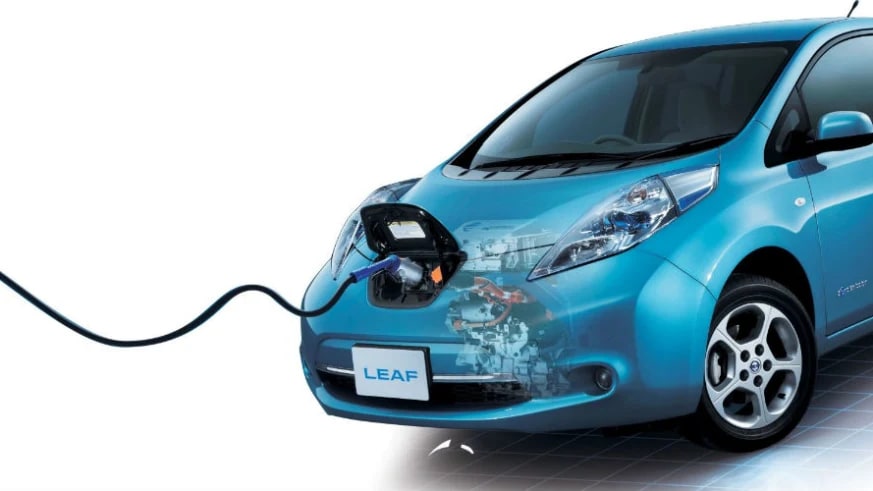
Choosing for an electric vehicle is a commitment, because you’re completely stopping the use of petrol. No more visits to the gas station after you switch. It’s therefore also part of a lifestyle, because you’ll probably have to install an EV charging station at your home or workplace, and know your limitations when going on a road trip. The thought of driving in complete silence except for the sound of your tyres and not emitting any CO2 are the main reasons to go fully electric.
CONCLUSION
There are definitely a lot of pros to switching to either a hybrid, PHEV or EV. Next to the fuel savings, the lower or non-existing emissions are a big plus. Add that to the extra punch and instant power the batteries provide, paying a touch more to go hybrid seems like a good choice. More and more cars will come available with a hybrid variant as well, so in the future, there will be ample choice. And it doesn’t require you to do anything different. Together with the fact that resale value has improved recently due to the popularity of hybrids in the car sharing economy, their improved battery life is covered under warranty for 8 years/160,000km and servicing is as usual and you know the deal gets better and better.
When choosing PHEV you will have to look harder for a suitable vehicle, as not many manufacturers produce them. You will also need to think about your charging possibilities, otherwise you’re missing out on most of the functionality of the ‘plug-in’ part. The same goes for going fully electric; not many options and the need to charge instead of ‘fuelling up’. This requires a big step and a mentality change – so it will probably take a long time before it becomes mainstream. In some cities around the world (like London), there is a carbon tax (to prevent air pollution) to which certain hybrid, plug-in and electric vehicles are exempt. This is not the case in Australia as of yet, but perhaps in the future they might. Another good reason step away from conventional petrol/diesel engines now and get into a hybrid as a first step.
Visit Motorama Toyota, Motorama Mitsubishi or Motorama Nissan to check out our range of hybrid, PHEV and EV vehicles.

